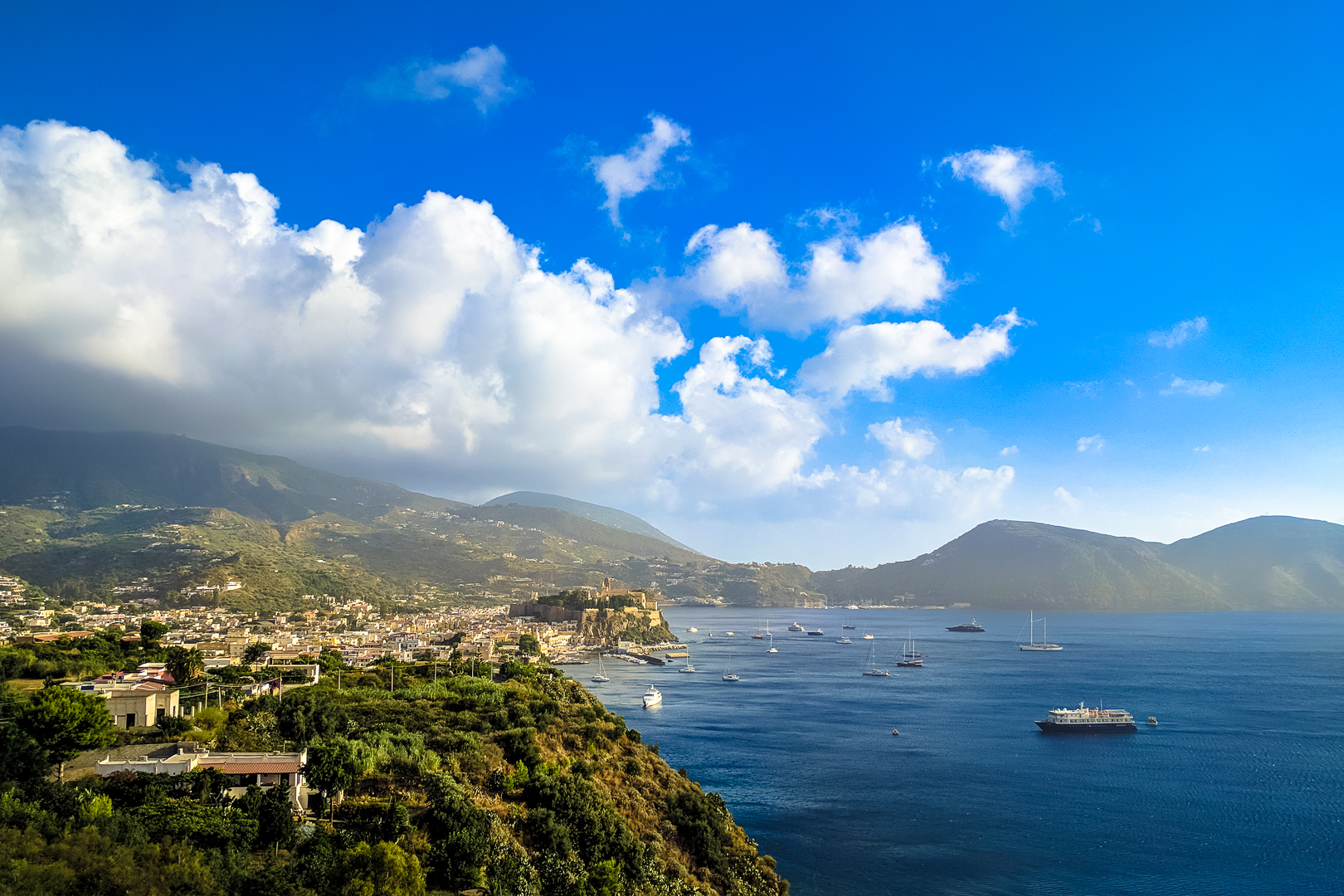
For thousands of years, the Aeolian Islands attracted many different people, leaving behind a unique blend of natural and cultural heritages all over the islands. After so many settlers, the time has come to forge ahead with the largest invasion of island biologists ever seen in the Aeolian Archipelago!
The Aeolian Archipelago (38°21’54” to 38°48’40” N; 14°20’35” to 15°14’70” E) has a total surface area of about 130 km2, including seven main islands (Lipari, Salina, Vulcano, Stromboli, Filicudi, Alicudi, and Panarea) and many islets and stacks. The beginning of the volcanic activity in this area dates to about 1 million years ago, but the extant islands emerged during the last 400,000 years, and the subaerial part of two of them (Alicudi and Stromboli) has an estimated age of less than 100,000 years. The archipelago is still volcanically active; in fact, impressive eruptions have occurred in historic times at Vulcano and Lipari, and the constant eruptive activity of Stromboli is a major tourist attraction. The archipelago is characterized by an average annual rainfall ranging from 540 to 680 mm, with a 4-5 months-long dry season and an average annual temperature of 18.3 °C.
The landscape of the Aeolian islands has long been shaped by human activities. The first human settlers colonised the archipelago around the mid-6th millennium BCE (Middle Neolithic), attracted by the opportunity of exploiting local deposits of high-quality obsidian. Between 580 and 396 BCE, the Greek colony of Lipára was a wealthy town, exporting not only vegetables and fruit, but also the aluminium and sulphur extracted in the archipelago, and producing its own pottery ware. The fuelwood consumption for these industrial activities was probably responsible for the final collapse of the local forests.
Between the 2nd century BCE and the 8th century CE, sparse agricultural communities were scattered in the countryside of almost all the islands. Later and until the first half of the 17th century, the most peripheral islands of the Aeolian archipelago were almost uninhabited. The main source of income has been for centuries the production and trade of agricultural products such as raisins, wine, legumes, fresh and dry fruit, and capers. A large portion of the Aeolian Islands is still characterized by huge and complex systems of stone-wall terraces where not only vines, olives, and capers were grown, but also cereal crops.
During the second half of 19th century, the Aeolian population reached its highest peak, thanks to the income issuing from trading local agricultural products, pumice, alum, and sulphur. Shortly after, Phylloxera destroyed most of the vineyards. The economic crisis triggered massive emigration towards S- and N-America and Australia. This trend has reversed in the last six decades, thanks to the tourism (600.000 visitors/year) which, however, currently poses a major threat to many coastal ecosystems.
